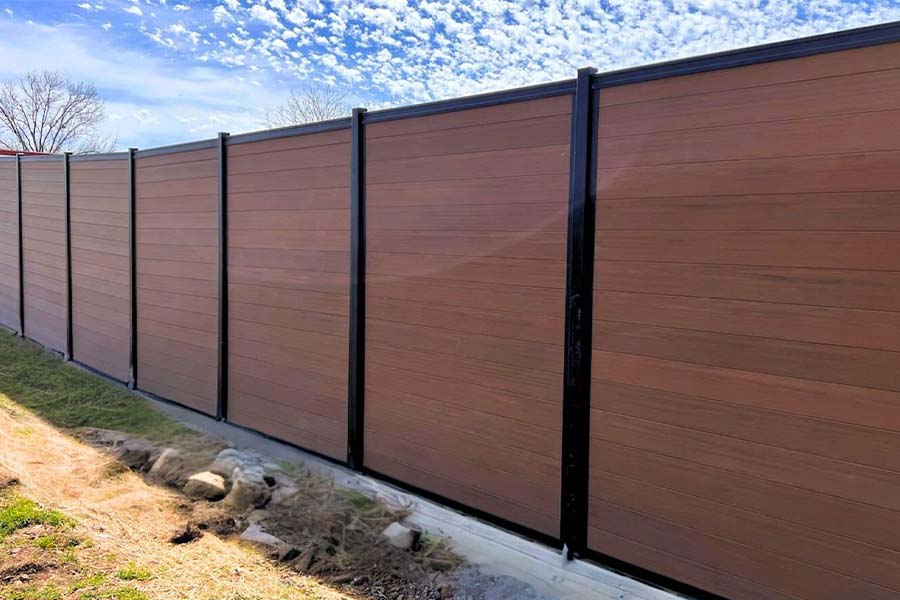Featured

Selecting the right secure fencing product for your residential or commercial property is a choice that stabilizes appearances, functionality, and budget plan. Among the most preferred options, wood, plastic, and light weight aluminum each deal one-of-a-kind advantages and disadvantages. Understanding these can aid you make an enlightened choice that straightens with your demands. Here's a malfunction of the benefits and drawbacks of these three usual fence products.
Timber Secure Fencing. Timber fence has actually been an ageless selection for home owners because of its all-natural elegance and adaptability.
Pros:. Aesthetic Charm: Timber provides a warm and timeless look that complements a variety of building designs. Personalized: It can be painted, tarnished, or cut right into one-of-a-kind styles to match personal preferences. Cost-efficient: Initially, wood fence can be an economical choice contrasted to various other materials. Eco-Friendly: Timber is a renewable energy and can be sustainably sourced. Disadvantages:. High Maintenance: Timber needs regular sealing, discoloration, or painting to prevent rot, insect damages, and weathering. Toughness Concerns: Without correct treatment, wood can warp, crack, or degeneration over time, especially in locations with high humidity. Shorter Life-span: A timber fence typically lasts 10-20 years, depending upon the kind of timber and degree of maintenance. Wood is optimal for those who value a standard appearance and agree to commit to its maintenance.
Plastic Fence. Plastic is a contemporary, low-maintenance fencing option that has grown in appeal recently.

Pros:. Reduced Maintenance: Plastic does not need paint, discoloration, or sealing and can be quickly cleaned with soap and water. Climate Resistant: It holds up against rough climate problems without decomposing, rusting, or warping. Durable: Vinyl fences can last 20-30 years with very little maintenance. Range of Styles: Available in lots of colors, styles, and appearances, some plastic alternatives imitate the look of timber. Disadvantages:. Higher Upfront Price: Vinyl fencing can be much more pricey at first contrasted to wood. Brittleness in Winter: In severe chilly, plastic may split or become breakable. Limited Services: Individual panels can be hard to change, requiring careful matching to the existing fencing. Vinyl is ideal suited for property owners looking for a resilient, low-maintenance remedy with contemporary visual appeals.
Light Weight Aluminum Fencing. Aluminum fence is a long lasting and lightweight choice, usually chosen for its contemporary appearance and convenience.
Pros:. Rust-Resistant: Light weight aluminum does not corrosion, making it an exceptional option for humid or damp environments. Low Upkeep: Needs marginal maintenance and is easy to clean. Durable: While lightweight, light weight aluminum is strong sufficient to withstand many environmental problems. Long Lifespan: Can last numerous decades without significant wear or deterioration. Range of Styles: Uses a sophisticated and sleek look, usually utilized for attractive or decorative functions. Disadvantages:. Higher Price: The initial financial investment for aluminum secure fencing is higher than wood or plastic. Less Personal privacy: Light weight aluminum fencings are typically made with open pickets, making them much less reliable for privacy. Prone to Damages: Although resilient, light weight aluminum can be dented by solid influences. Aluminum is optimal for those looking for a stylish, lasting alternative that needs minimal care.
Making the Right Selection. Each secure fencing product-- timber, plastic, and aluminum-- uses distinctive benefits and disadvantages. Your choice should depend on your particular priorities, such as spending plan, upkeep choices, environment, and aesthetic goals:
Select wood if you love a standard appearance and do not mind regular maintenance. Opt for vinyl if you desire a low-maintenance, weather-resistant fencing with modern charm. Go with aluminum if you prioritize resilience, rust resistance, and a streamlined style. By evaluating these advantages and disadvantages, you can pick a fence product that enhances your building while meeting your functional demands.
Latest Posts
Trusted Roofing Services for Every Home - A-Abel Roofing
Published Jan 22, 25
1 min read
When Budgeting for a Fence?, # What Hidden Costs Should I Take Into Consideration.
Published Jan 22, 25
0 min read
Experience Fond Memories and Delicious Home Cooking at Gasoline Allie's
Published Jan 22, 25
1 min read
More
Latest Posts
Trusted Roofing Services for Every Home - A-Abel Roofing
Published Jan 22, 25
1 min read
When Budgeting for a Fence?, # What Hidden Costs Should I Take Into Consideration.
Published Jan 22, 25
0 min read
Experience Fond Memories and Delicious Home Cooking at Gasoline Allie's
Published Jan 22, 25
1 min read